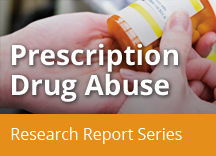
Nora D. Volkow, M.D.
Director
National Institute on Dug Abuse
The nonmedical use and abuse of prescription drugs is a serious public health problem in this country. Although most people take prescription medications responsibly, an estimated 52 million people (20 percent of those aged 12 and older) have used prescription drugs for nonmedical reasons at least once in their lifetimes. Young people are strongly represented in this group. In fact, the National Institute on Drug Abuse’s (NIDA) Monitoring the Future (MTF) survey found that about 1 in 12 high school seniors reported past-year nonmedical use of the prescription pain reliever Vicodin in 2010, and 1 in 20 reported abusing OxyContin—making these medications among the most commonly abused drugs by adolescents.
The abuse of certain prescription drugs— opioids, central nervous system (CNS) depressants, and stimulants—can lead to a variety of adverse health effects, including addiction. Among those who reported past-year nonmedical use of a prescription drug, nearly 14 percent met criteria for abuse of or dependence on it. The reasons for the high prevalence of prescription drug abuse vary by age, gender, and other factors, but likely include greater availability.
The number of prescriptions for some of these medications has increased dramatically since the early 1990s. Moreover, a consumer culture amenable to “taking a pill for what ails you” and the perception of prescription drugs as less harmful than illicit drugs are other likely contributors to the problem. It is an urgent one: unintentional overdose deaths involving opioid pain relievers have quadrupled since 1999, and by 2007, outnumbered those involving heroin and cocaine.
NIDA hopes to change this situation by increasing awareness and promoting additional research on prescription drug abuse. Prescription drug abuse is not a new problem, but one that deserves renewed attention. It is imperative that as a Nation we make ourselves aware of the consequences associated with abuse of these medications.
For more information visit National Institute of Drug Abuse (NIH)



